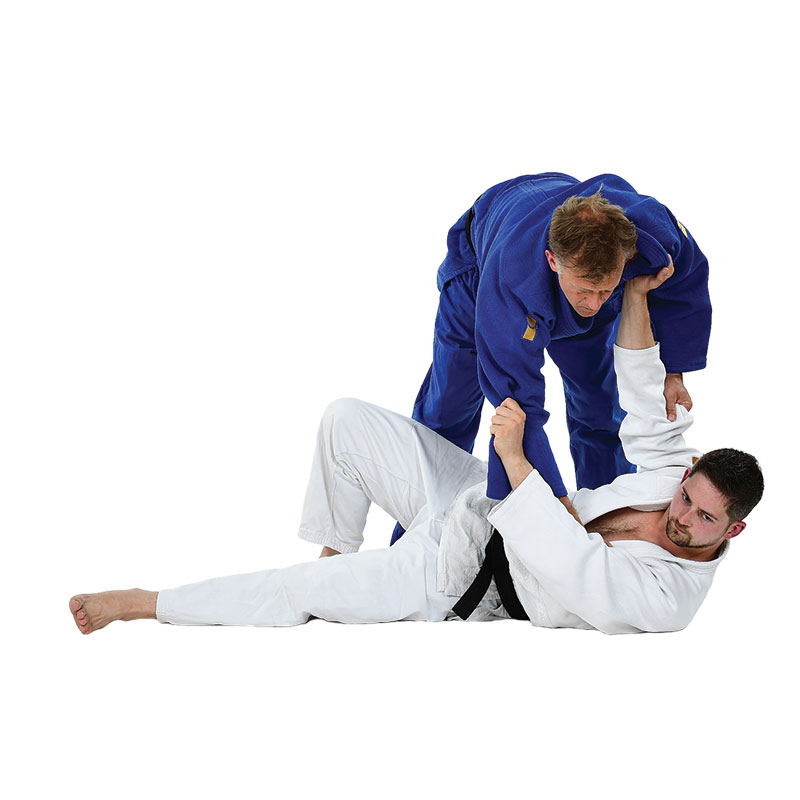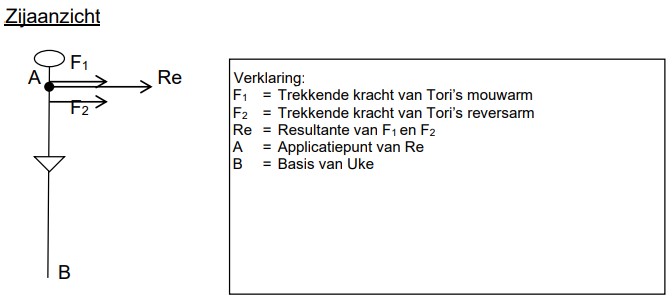Yoko-wakare 横分
Side Separation
Classification: Sacrifice Technique (Sutemi-waza) – Sideways (Yoko-sutemi)
Group: Gokyo no Waza – Dai Sankyo (Third Group)
Description
A sacrifice throw where tori breaks uke’s balance forward or towards uke’s front-right corner. As uke begins to shift weight, tori drops to their left side or back, extending both legs in front of uke and using their entire body as a barrier. The momentum created throws uke in a wide arc directly over tori’s torso.
This throw often occurs when uke aggressively pushes forward, making it useful both as a surprise attack and a counter technique.

Biomechanics of Yoko-wakare
Yoko-wakare is classified as a momentum-based throw. The force vector (Re) is extended through the use of tori’s arms and torso (F1 and F2) pulling uke while the body falls sideways. Tori’s body acts as a barrier or block, preventing uke from stepping away and redirecting their balance.
The technique also involves centrifugal force, with uke being spun in a curved trajectory over tori. Proper timing and precision in body placement are crucial, as any misalignment can reduce effectiveness—or worse, lead to injury.

Did you know?
Most judoka know that “yoko” means “side” in Japanese judo terminology. But what about “wakare”?
The word wakare (分) comes from the verb wakereru, which means to separate, to split apart, or to divide. In this context, Yoko-wakare can be understood as a sideways separation—a throw in which uke is split away from their balance and stability.
There’s also another technique called Daki-wakare (抱分), which literally means “embracing separation”. In this technique, tori embraces uke tightly and then sacrifices their own body weight to split uke away from their center of gravity, often resulting in a powerful backward or sideways throw.